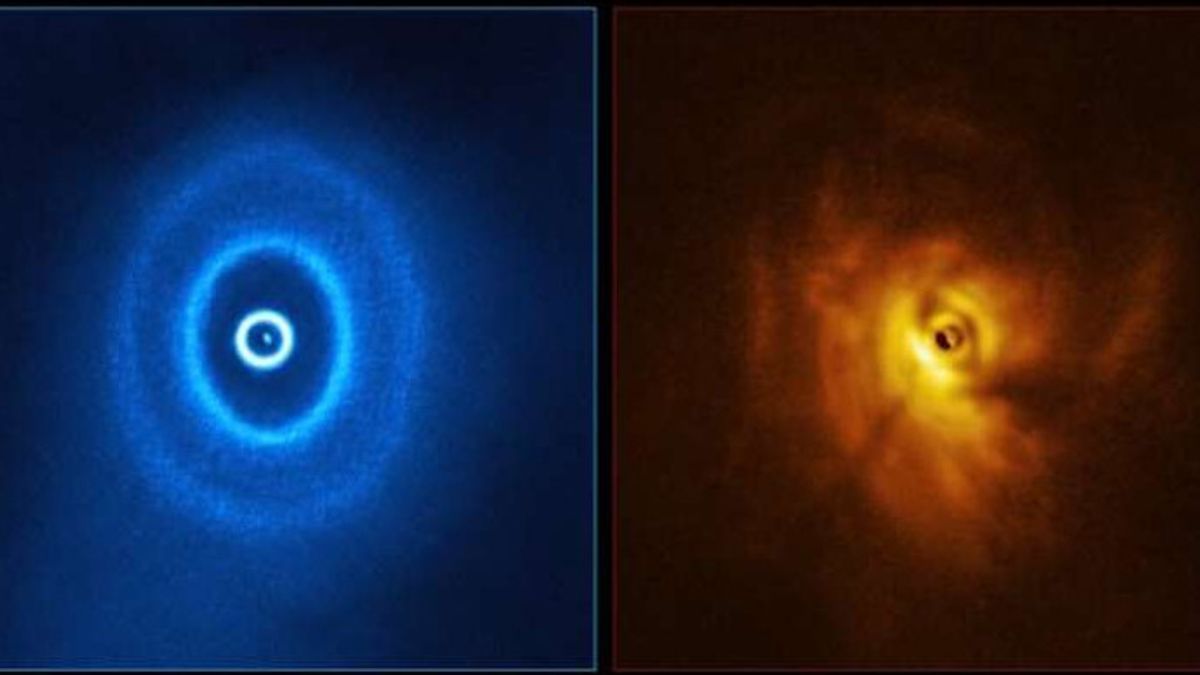JAKARTA - Astronomers at the University of Nevada, Las Vegas (UNLV) have identified a planet orbiting three stars, dubbed the GW Orionis system.
The GW Orionis system or GW Ori is a triple star system located at the head of Orion the Hunter, with three stars bound to each other by gravity, and recent observations by astronomers of a ring of dust around these stars, suggest that there is a large planet. or a protoplanetary disk orbiting all three in what is called a circumtriple orbit.
The protoplanetary disk is a dense region of gas and dust left over from the formation of these young stars and has not been blown away by the stellar wind. The reason scientists call it a protoplanetary disk is because leftover material can combine and form planets. GW Ori's protoplanetary disk has a prominent fissure in it, and scientists announced in September that they believed a planet was within this gap.
Published in the journal Monthly Notices of the Royal Astronomical Society in September, and taken with the Atacama Large Millimeter/submillimeter Array (ALMA) telescope in Chile, the planet looks like a ring in the center of a triple star system. This discovery gives astronomers a clue that there may be a massive planet orbiting there.
To understand this unusual discovery, astronomers used data collected by ALMA to model the system. They considered the various possibilities of what could cause the planet to be in the gap of the three star system. GW Ori's protoplanetary disk is different, in that it surrounds not one but three stars, and has a curved ring structure with large gaps.
However, after building the GW Orionis model, they found that it could be due to the gravitational force of the three stars at the center of the system. But the most likely explanation for this discovery is the presence of a single large planet, to carve out space in the dust ring, which is similar in size and mass to Jupiter.
Although the system is too remote to detect planets directly, this is the model that best fits the data. According to Jeremy Smallwood, lead author and Ph.D. astronomy graduate from UNLV, it is usually the first planet to form in a star system. Like the terrestrial planets Earth and Mars.
The planet itself cannot be seen, but the findings highlighted in the study suggest it is the first circumtriple planet ever discovered.
Smallwood said that with the ALMA telescope, further observations could be made in the coming months, which could provide direct evidence of the phenomenon, such as confirming whether there is indeed a planet there.
"This is very interesting because it makes the planet formation theory really strong. It could mean planet formation is much more active than we thought, which is pretty cool," Smallwood said as quoted by Digital Trends, Monday, October 3.
The English, Chinese, Japanese, Arabic, and French versions are automatically generated by the AI. So there may still be inaccuracies in translating, please always see Indonesian as our main language. (system supported by DigitalSiber.id)













